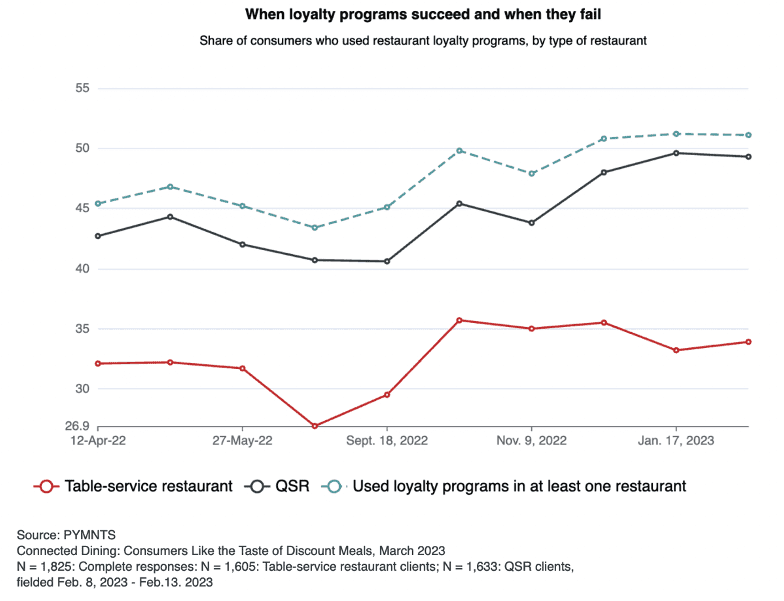
Restaurant loyalty program use has broadly increased in the past year, but that increase has begun to plateau in recent months.
Moreover, quick-service restaurant (QSR) customers remain far more likely to use loyalty programs than table-service restaurant customers, but when offered, consumers will use loyalty programs as they see restaurant food as priced too high, so they crave discount options.
According to PYMNTS research, “Discounts influence consumers’ thinking, even if the effect is modest. The overwhelming majority of restaurant customers like the meals served to them, but they like them a little more when a discount is involved,” as 81% of consumers who paid full price for their meals said the dining experience was satisfactory.
This rises to 86% when (and if) discounts are available, but it depends on the dining venue, with QSR diners having different expectations than those dining at table-service establishments.
Fifty-one percent of restaurant patrons used restaurants’ loyalty programs in January, mostly at QSRs. That makes sense as QSR frequenters are known to be more price sensitive. QSR loyalty programs grew participation by 15% in the last year.

Meanwhile, patrons of table-service restaurants showed a greater willingness to pay extra for a better grade of comestibles and a higher-end dining experience. However, that doesn’t mean many table-service diners aren’t interested in a less expensive meal, especially when the food and experience are on a higher level than QSRs.
“For some customers, the lack of a loyalty program is not enough to persuade them to avoid some restaurants,” PYMNTS reported. “Sixty percent of table-service restaurant patrons cited the lack of loyalty programs at restaurants they visited as a reason for not having used such a program in the last 30 days. Twenty-eight percent of QSR customers said they had not used a loyalty program recently because the restaurants they visited did not have one.”
We found that “small restaurants that have or want to establish loyalty programs should consider a diverse set of strategies. Before they launch their own first-party app, they may have to weigh whether they would be better served by linking up with a third-party aggregator that provides a shared app,” as 26% of consumers who had not used a restaurant loyalty program in the last 30 days said they did not want additional apps on their phones, and 32% of consumers who ordered meals from QSRs without using their loyalty programs said the same.